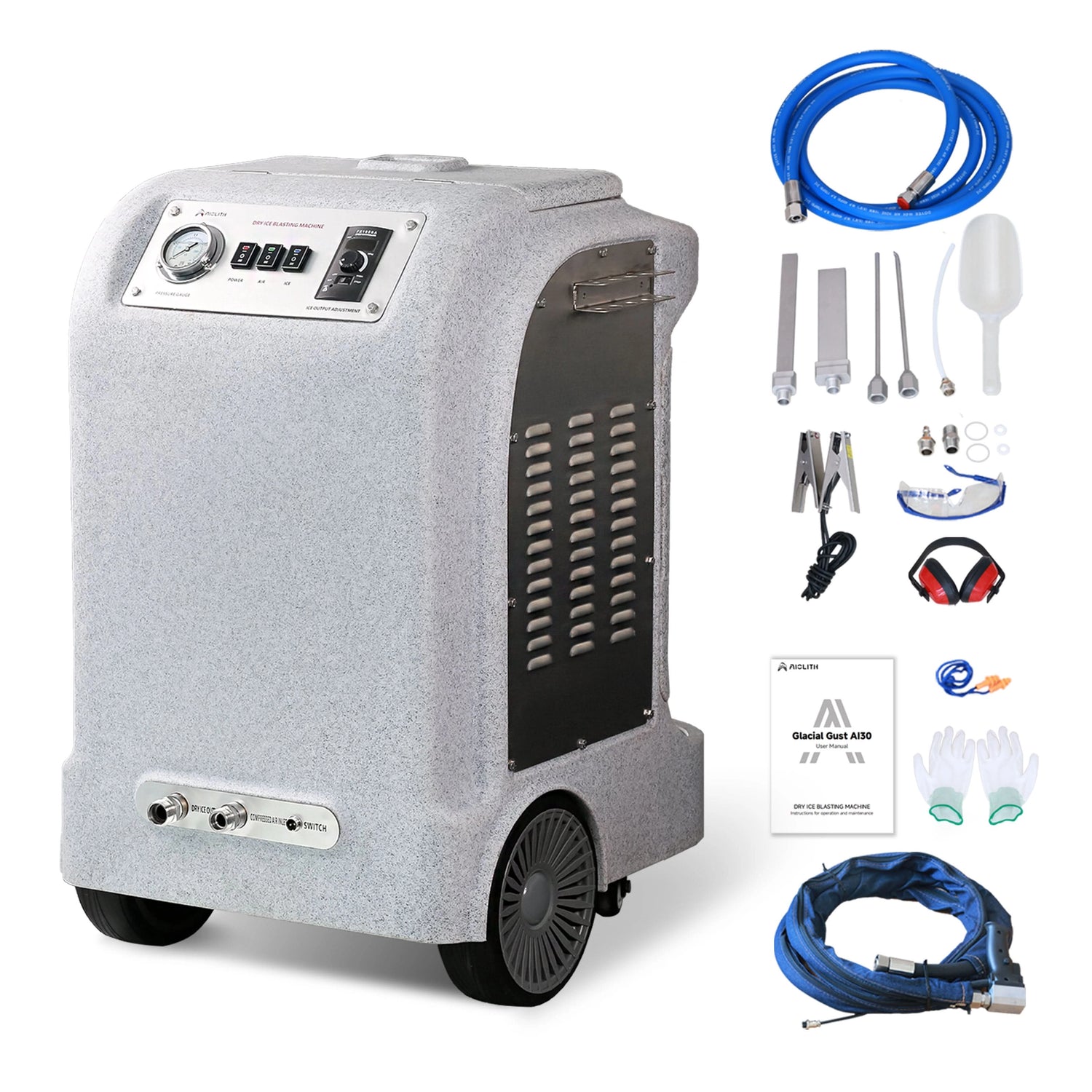8 Effective Steps to Deep Clean Really Dirty Floors with a Commercial Floor Scrubber
Share
Deep cleaning extremely dirty floors requires more than simple mopping.
Traditional methods often leave residues and bacteria behind, especially in commercial spaces. Using a floor scrubber ensures consistent cleaning, efficient water recovery, and thorough removal of dirt. This article explores 8 effective steps for deep cleaning floors, highlighting how commercial machines like AIOLITH floor scrubbers optimize the process (source).
1. Pre-Clean and Remove Loose Debris
Before deep cleaning, sweep or vacuum to remove dust, hair, and large debris. This prevents scratches and ensures the floor scrubber can work effectively (Rutala & Weber, 2019).
2. Choose the Right Floor Scrubber for Your Surface
Different floors require different brushes and settings. Tile, concrete, and vinyl respond differently to friction and cleaning solution. Floor scrubbers with adjustable pressure allow safe cleaning across materials (Clark, 2021).
3. Prepare Water and Cleaning Solution
Use clean water and the appropriate floor-safe cleaning solution. Overuse of chemicals can leave sticky residues, attracting dirt (Kampf, 2018). AIOLITH scrubbers provide controlled dispensing to prevent over-application (source).
4. Apply Scrubbing Technique
Operate the floor scrubber systematically. Overlapping strokes with consistent speed ensure no area is missed. Research shows consistent friction is key for microbial removal (Otter et al., 2013).
5. Focus on High-Traffic Areas
Entrances, kitchens, and hallways accumulate more grime. Extra passes with the floor scrubber improve cleanliness in these zones. CDC (2019) highlights that concentrated cleaning reduces bacterial load.
6. Rinse and Recover Dirty Water
Floor scrubbers separate clean and dirty water. Immediate recovery prevents recontamination and accelerates drying. This is a key advantage over manual mopping (EPA, 2021).
7. Dry Thoroughly
Quick drying reduces the chance of dust or microbes adhering to the floor. Floor scrubbers with integrated squeegees speed this process, making surfaces safe for immediate use (NHS, 2021).
8. Maintain the Floor Scrubber
After cleaning, empty tanks, rinse brushes, and check for wear. Regular maintenance ensures the machine operates efficiently and prolongs its lifespan (Rutala & Weber, 2019).
Comparison Table: Manual Cleaning vs. Commercial Floor Scrubber
| Feature | Manual Cleaning | Floor Scrubber |
|---|---|---|
| Cleaning Depth | Surface-level, uneven | Deep cleaning with friction and adjustable pressure |
| Labor Requirement | High, repetitive | Reduced, efficient operation |
| Water Usage | Often excessive | Clean/dirty water separation |
| Drying Time | Slow, residual moisture | Fast drying with squeegee |
| Coverage Area | Limited | Large commercial areas |
| Chemical Efficiency | Variable | Controlled dispensing reduces waste |
| Bacterial Reduction | Moderate | High, due to friction and immediate water recovery |
FAQs
Q1: Can a floor scrubber clean extremely dirty floors completely?
Yes, commercial floor scrubbers remove embedded grime, dirt, and biofilm more effectively than manual methods.
Q2: Are floor scrubbers safe for all floor types?
Most models, including AIOLITH floor scrubbers, have adjustable brushes and pressure settings for various surfaces (source).
Q3: How often should deep cleaning be done in commercial spaces?
High-traffic areas should be deep cleaned weekly, while low-traffic areas can be cleaned monthly.
Q4: Do floor scrubbers save time compared to manual mopping?
Yes, they reduce labor hours significantly while improving cleaning quality.
Q5: How do I maintain my floor scrubber after heavy cleaning?
Empty solution and recovery tanks, rinse brushes, inspect squeegees, and check battery or power systems regularly.
Conclusion
Deep cleaning really dirty floors requires preparation, correct cleaning agents, and the right tools. Using a commercial floor scrubber ensures thorough, efficient cleaning while reducing labor and improving hygiene. AIOLITH floor scrubbers optimize this process with adjustable pressure, controlled solution use, and rapid water recovery (source). Following these 8 steps ensures spotless, safe, and sanitary floors in commercial environments.
References
- CDC. (2019). Cleaning and Disinfecting Your Facility. https://www.cdc.gov/hygiene/cleaning/index.html
- EPA. (2021). Cleaning vs. Disinfecting vs. Sanitizing. https://www.epa.gov/coronavirus/cleaning-and-disinfecting-your-home
- Otter, J. A., Yezli, S., & French, G. L. (2013). Evidence that cleaning reduces infection spread in hospitals. Journal of Hospital Infection, 85(2), 99–105. https://doi.org/10.1016/j.jhin.2013.04.007
- Rutala, W. A., & Weber, D. J. (2019). Best practices for disinfection of environmental surfaces. Am J Infect Control, 47, A96–A105. https://doi.org/10.1016/j.ajic.2019.01.014
- Kampf, G. (2018). Effect of frequent cleaning on microbial load. GMS Hygiene and Infection Control, 13. https://doi.org/10.3205/dgkh000307
- NHS. (2021). Prevent germs from spreading. https://www.nhs.uk/live-well/healthy-body/how-to-prevent-germs-from-spreading/
- AIOLITH. Floor Scrubbers. https://www.aiolith.com/pages/floor-scrubbers

